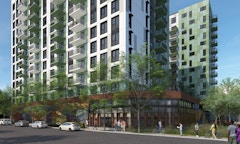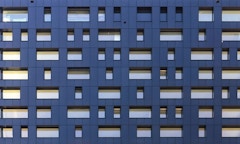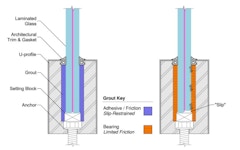
Design Principles For Museum Daylight Systems
<p>This research unlocks the relationship between space, structure and light in nine unique museums developed by architect Renzo Piano. Renzo Piano…

<p>This research unlocks the relationship between space, structure and light in nine unique museums developed by architect Renzo Piano. Renzo Piano…
<p>With the developments in production, industrial facilities lost their function and were abandoned over time. The most frequent and often the most…

<p>U-shaped annealed profiled glass, or U channel glass is used in both the interior and exterior glass façade for decades, as it has long and…

<p>Airflow within the cavity of double-skin facades is a key component of adaptive building envelopes which change thermophysical properties to meet…

Building skins play a pivotal role in architecture. Other than the aesthetical and architectural aspects, facades are key to the climate performance,

Large format, steel-stud framed “megapanel” facades with rainscreen cladding create uniquely complicated requirements for digital documentation and

With facades becoming increasingly more complex, and performance a key objective, expertise becomes an important component of successful design
Glass is an essential component for any type of building. Its transparency enhances daylighting and provides occupants a view to the outside. Whether

Designing a multi-functional building envelope as an architectural façade, environmental interface and solar collector is a multi-objective

Reducing greenhouse gas emissions from the building sector is critical to limiting global temperature rise to less than 1.5⁰C. Construction and
What is the difference between artwork and facadework? How can artwork be integrated into building façades? What are the possibilities when a façade
<p>Few buildings are as iconic as Willis Tower. Generations of Chicagoans have a collective memory of this building playing a role in their entire…
<p>Climate change goals will require significant improvements in the way buildings are constructed and operated. Building reuse can combat climate…
The stability of monolithic glass fins is reasonably well defined; as an elastic material it behaves in a similar manner to other elastic materials

<p>This paper will provide case studies of two high-performance building envelopes in the San Francisco Bay Area where the fabrication of bespoke…

<p>This paper discusses a simulation study of different window systems, where heat transfer simulations were performed to investigate thermal…

Effective thickness is a simplified method for the structural evaluation of laminated glass section properties. The method consists of defining the
The United Nations Department of Economic and Social Affairs projects a world population growth of over three billion over our current, nearly eight

<p>Glass spandrels are a common design strategy utilized to opacify floor levels in building facades. These opaque glass assemblies are integrated…

<p>There were good why reasons early US Modernism first evolved in California– wide open sites with no constraints (physical or zoning), and…